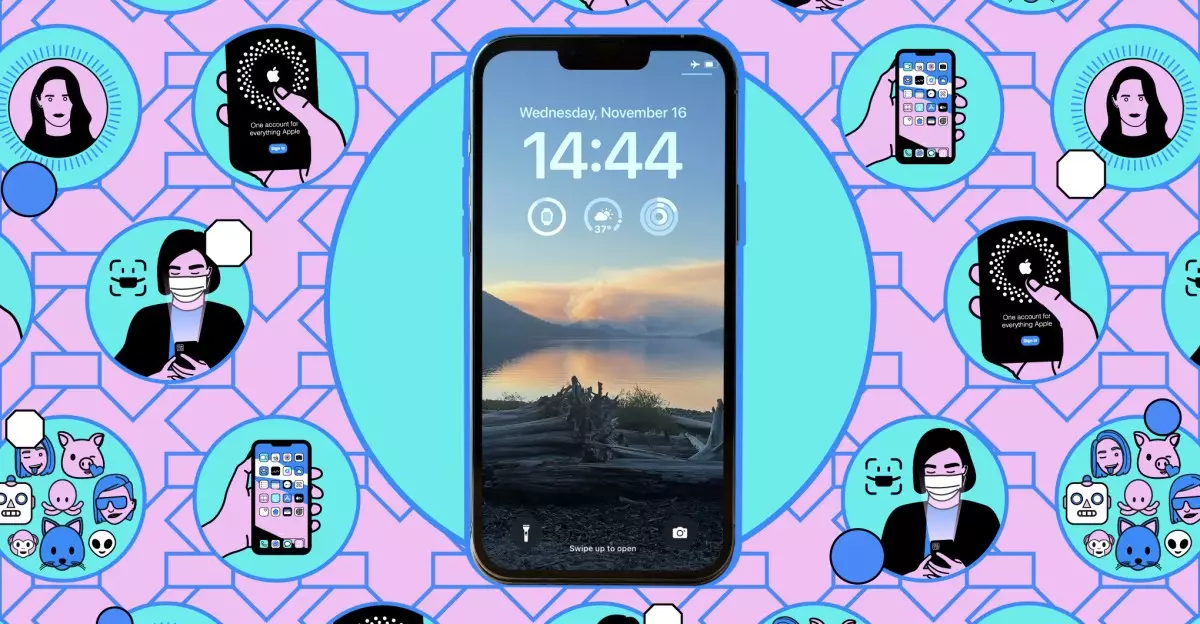Apple has consistently pushed the envelope in mobile technology, and with the introduction of Visual Intelligence, they have taken things to an exceptional new level. This immersive feature transforms the iPhone’s camera into a sophisticated tool for identifying objects and answering questions about the world around us. Imagine walking down the street with your iPhone, capturing snippets of everyday life while receiving instant insights. This is not merely a technological gimmick; it’s a real-world application that changes how we interact with our environment.
Visual Intelligence uses advanced artificial intelligence to translate visual input into actionable information. For example, point your camera at a restaurant, and it promptly reveals opening hours, menu options, and even delivery opportunities. Similarly, scanning a plant provides both its name and care instructions. Such functionality not only enhances user convenience but opens a dialogue between technology and our daily experiences.
Compatibility and Accessibility of Visual Intelligence
However, this incredible feature comes with some accessibility limitations. Currently, only users with specific models can tap into the power of Visual Intelligence. To utilize this feature, you must own an iPhone 16 series, specifically models like the iPhone 16, 16 Plus, 16 Pro, or 16 Pro Max, or other select models running on recent iOS updates. This creates a unique niche effect: those equipped with the latest devices have the opportunity to explore an innovative experience, while others seem to lag behind. This raises a pertinent question: Are we creating a tech divide in functionality?
Interestingly, Apple provides various avenues to enable Visual Intelligence, ensuring that the feature is not just a background function but an intuitive utility easily accessed through settings, lock screen customizations, or the Control Center. This flexibility is commendable but could be streamlined further for a more user-friendly experience.
Expanding the Horizons of Identification
What truly stands out about Visual Intelligence is its versatility in recognizing diverse subjects. The technology extends beyond mere business evaluations and into the realms of nature and everyday objects. The feature’s ability to identify animals and plants with zero user prompts creates an immediate connection between users and the environment. While Google Lens has offered similar functions, Apple’s sleek integration into its ecosystem is what sets it apart.
Imagine walking in a park, pointing your device at a vibrant flower, and receiving immediate details about its species and care tips. This function democratizes knowledge; it places the wonders of the natural world at your fingertips, making you a more informed citizen of the planet. One cannot ignore how this lifestyle shift could lead to increased environmental awareness and conservation efforts.
Harnessing the Potential of Text Recognition and Interaction
Text recognition is another remarkable capability embedded within Visual Intelligence. By simply aiming your camera at written text, you gain options to summarize, translate, or even read aloud the content. This utility is invaluable in a world where people are constantly bombarded with information in various languages. The implications for travelers and immigrants, for instance, are profound. Navigating foreign languages becomes less daunting with this feature.
Additionally, the app’s capacity to perform actions based on recognized text—such as creating calendar events or making calls—saves users a considerable amount of time. In a fast-paced world where efficiency is paramount, such features could revolutionize personal productivity.
The Interactivity of Visual Intelligence
One of the unique aspects of Visual Intelligence is its interactive functionality. By tapping ‘Ask,’ users gain access to a ChatGPT prompt, allowing them to dive deeper into any object within their camera’s lens. Want to solve a complex math problem or recreate a dish based on ingredients? You can. This blend of visual recognition and conversational AI gives users greater control, enabling a level of interactivity that transforms the traditional passive experience of using a camera into an engaging learning opportunity.
Moreover, the ‘Search’ option provides access to Google search results for identified objects in real-time. This combination of features not only caters to curiosity but encourages spontaneous learning. Instantaneous responses can satisfy a fleeting question, principle that could also foster a culture of informed exploration.
As a technology enthusiast, I find Visual Intelligence promising; it reflects the zenith of where mobile tech is heading. While there are areas for improvement in accessibility and user interaction, the core functionality is undeniably compelling. It has the potential to redefine not only personal interactions but societal engagement with the world around us. In a digital age where knowledge is power, tools like Visual Intelligence can empower us to connect, discover, and learn in unparalleled ways.

